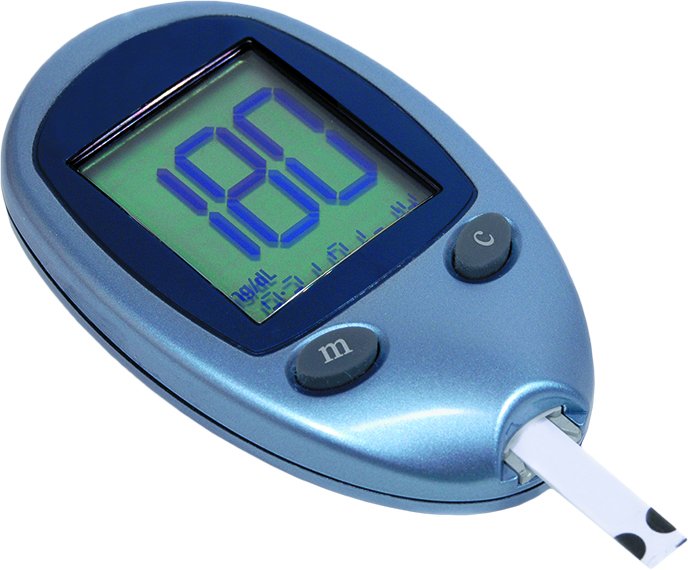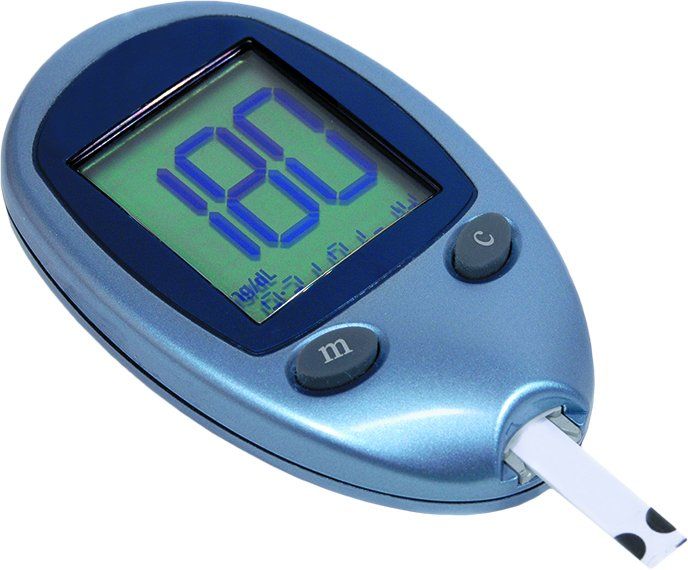Dreamstime.com

Controlling type 2 diabetes requires spot-checking blood sugar, including after you eat. “The highest blood sugars of the day tend to be after meals,” says Richard Siegel, MD, an endocrinologist and co-director of the Diabetes and Lipid Center at Tufts Medical Center. Blood sugar spikes – temporary high readings – after meals can be hard on heart health.
“Compared to high fasting blood sugar readings, high post-meal blood sugar has been associated with worse effects on cardiovascular health,” Siegel says. “Having higher blood sugar after meals and more fluctuation in blood sugar can be damaging to the lining of blood vessels.”
Siegel explains that to get an A1C (3-month average blood sugar) less than 7%, which is the general target recommended for non-pregnant adults with diabetes, your blood sugar has to stay under 180 mg/dL most of the time, including after meals. (In comparison, people without diabetes rarely have post-meal blood sugars over 140 mg/dL.) The good news is that it may be easier to improve post-meal blood sugar than you think. Try these strategies:
1. Do before-after testing.
To get a clearer idea of the effect of a meal, check blood sugar right before eating and again after eating, such as two hours after starting the meal. It’s the difference between these two numbers that really shows the effect of what you ate. This “paired testing” can be especially helpful if you eat something you don’t typically have or suspect a favorite meal is causing blood sugar to spike. Testing may suggest you need to reduce how much you eat of one or more parts of the meal, particularly carbohydrate-rich ones and oversized portions, or make different food choices.
2. Test at different times after meals.
If your post-meal blood sugars appear OK but your A1C is still high, test blood sugar at varying times after meals, such as one to three hours after eating. “Different meals may cause blood sugar to peak at different times,” Siegel says. “A high-carbohydrate meal may raise blood sugar early on after eating while a high-fat meal may delay the peak in blood sugar.” If you always test at the same time after meals, you may not see the highest readings.
3. Eat a nutritious mixed meal.
Siegel sometimes finds people need to work on eating a mix of different foods to improve post-meal blood sugars. That means balancing your plate with lean protein, plenty of non-starchy vegetables and small amounts of whole grains/minimally processed starches. Then, flavor with some healthy fat, such as salad dressing, vegetable oil spread or nuts. For example, instead of eating a plate full of spaghetti with marinara sauce, reduce the pasta portion (choose whole grain, too) and add some sauted pieces of chicken breast, shrimp or tofu, non-starchy vegetables (such as summer squash or spinach) and pine nuts, either to the sauce or on the side.
Dreamstime.com

4. Walk after meals.
“In the American Diabetes Association’s most recent position statement on exercise, it suggests taking a short walk after each meal to help bring down post-meal blood sugar, at least to a small extent,” Siegel says. “That may actually be better for blood sugar than just taking one single walk during the day.”
This was shown in a study recently published in Diabetologia. Scientists from New Zealand randomly assigned 41 adults with type 2 diabetes to either walk continuously for 30 minutes each day, but at any time, or walk for 10 minutes after each of their three main meals (starting within 5 minutes after finishing the meal). Walking after each meal resulted in post-meal blood sugar levels that were 12% lower overall compared to one 30-minute walk daily.
5. Reduce carbs at breakfast.
“The highest blood sugars of the day tend to be after breakfast, so it may help to make breakfast your lowest carbohydrate meal,” Siegel says. “In the morning, your body tends to be more insulin resistant, which is related to some of the stress hormones (including growth hormone and cortisol) that increase in your circulation during the very early hours of the morning.”
Try replacing some of the carbohydrate at breakfast with protein, which has been shown to improve post-meal blood sugar in people with type 2 diabetes. For example, eat low-fat plain Greek yogurt with chopped nuts instead of low-fat, sweetened yogurt. For a hot meal, make egg frittata “muffins” (consisting of a scrambled egg mixture with non-starchy vegetables baked in a muffin tin), or try a breakfast stir-fry of leftover chicken breast, peppers and mushrooms.
6. Eat high-carb foods last in meals.
Preliminary studies suggest changing the order in which you eat foods in a meal may help improve post-meal blood sugar. One tested strategy is to eat the entire protein portion (such as meat, chicken or fish) first in a meal before any carbohydrate foods. A slightly different strategy tested in studies is to eat non-starchy vegetables first, followed by protein foods and lastly high-carbohydrate foods, such as rice, bread, pasta or starchy vegetables (like potatoes and corn). Finish each part of the meal before moving on to the next. In trials of people with type 2 diabetes, these specific sequences of eating have improved post-meal blood sugar and A1C compared to eating carbohydrate-rich foods first or eating in any desired order.
As you’ve likely observed, your blood sugar response to what you eat is very individual. Give some of these strategies a try, and keep track of what works best for you.
To learn more: Diabetologia, December 2016
To learn more: Diabetologia, March 2016
To learn more: Nutrition & Diabetes, August 2016
To learn more: Diabetes Care, July 2015
To learn more: Journal of Clinical Biochemistry and Nutrition, January 2014





















